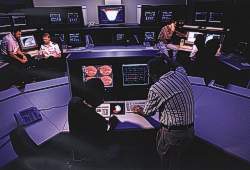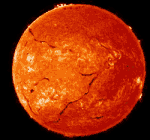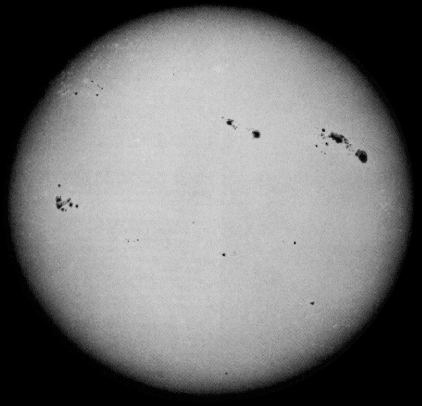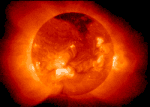|
|
|
| There
are currently an unprecedented number of scientific instruments watching
the sun, Earth, and space in-between for signs of space weather. In
space and on the ground, these instruments are improving our ability
to forecast space weather. |
|
 |
| |
The Space Weather Forecast Center at the
Space Environment Center
(SEC/NOAA) in Boulder, Colorado. (Photo courtesy of
SEC/NOAA.) | |
|
About Space Weather Forecasting
The official national space weather forecast center is the Space Environment
Center (SEC/NOAA). Located in Boulder, Colorado, SEC's Space Weather Operations
(SWO) issues space weather forecasts and alerts are issued by Space Weather
Operations.
The SWO receives space weather data from many different satellites and
ground-based stations around the world. Forecasters track sunspots,
map coronal holes and provide
a detailed description of all active
regions visible on the solar disk. (Illustration courtesy of SEC/NOAA.)
 |
| |
The Sun in H-alpha.
More...
| |
The face of the Sun, as seen here in Hydrogen-alpha wavelengths,
is far more violent than most people suppose.
Hydrogen-alpha is an
absorption line of neutral hydrogen in the red part of the visible
spectrum. It is used to characterize
solar flares,
filaments,
prominences,
and the fine structure of active regions.
 |
| |
The Sun in white light, showing sunspots..
More...
| |
Sunspot Groups, like those seen as dark areas in white-light images of
the Sun, are also responsible for
X-ray emissions as shown in the figure. These are
active regions where hot, dense plasmas are energized. They are also
associated with regions of oppositely directed magnetic fields.
 |
| |
The Sun in X-ray, from the Yohkoh spacecraft..
More...
| |
X-ray flares are classified as C (low intensity), M (moderate intensity),
and X (high intensity). Because solar flares and
coronal mass ejections can
cause
magnetic storms
in Earth's
magnetosphere, SESC also reports on
geospace conditions and the likelyhood of a magnetic storm.
Forecasters in the SESC also monitor the near-Earth space environment.
Solar flares produce vast amounts of X-rays and energetic
protons which can
be detected by NOAA satellites orbiting at
geosynchronous altitudes.
Energetic particles from the Sun and energized
plasma in Earth's
radiation belt
environment can cause damage to satellites.
|
